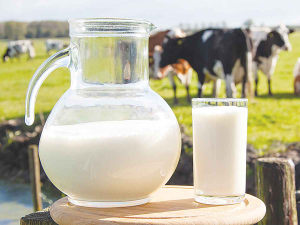The benchmark for world food commodity prices declined moderately in October, down 0.5% from September, with the index for dairy products the only one to rise, says the Food and Agriculture Organization of the United Nations (FAO).
The FAO Cereal Price Index declined by 1.0% from the previous month. International rice prices dropped by 2.0 % amid generally passive global import demand, while those of wheat dropped by 1.9 %, weighed on by strong supplies from the United States of America and strong competition among exporters. By contrast, quotations for coarse grains rose slightly, led by maize due to thinning supplies in Argentina.
The FAO Meat Price Index declined by 0.6%, as sluggish import demand especially from East Asia led to a fall in the international prices of pig meat, more than offsetting marginal increases in the prices of poultry, bovine and ovine meats.
In a contrasting trend, the FAO Dairy Price Index rose by 2.2% in October, ending a nine-month decline. World milk powder prices rose the most on the back of surging import demand for both near and longer-term supplies as well as some uncertainty over the impact of the El Niño weather conditions on the upcoming milk production in Oceania.
Meanwhile, persistent and intensifying conflicts are aggravating food insecurity, and moderating international food commodity prices are being countered by weak currencies in many low-income countries.
A total of 46 countries around the world, including 33 African countries, are assessed as needing external assistance for food, according to the latest Crop Prospects and Food Situation report.
Over 50% of residents of the Gaza Strip were estimated to be in acute food insecurity in 2022, prior to the current conflict. The FAO says the escalation of that conflict will increase the need for humanitarian and emergency assistance even as access to the worst-impacted areas remains a concern, adding that spillover effects from the conflict could worsen food insecurity in neighbouring Lebanon.
While world cereal production is forecast to expand by 0.9% in 2023 from the year before, the pace of growth will be half of that rate for the group of 44 Low Income Food Deficit Countries (LIFDCs), the report notes.



















